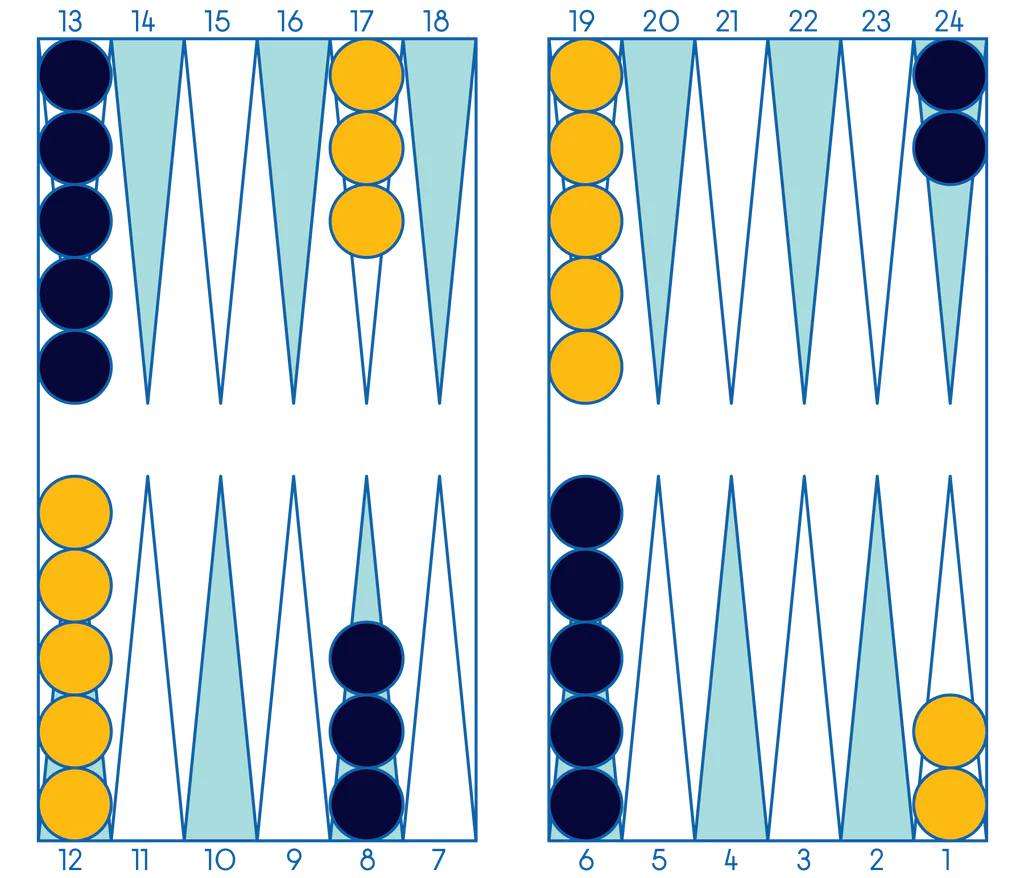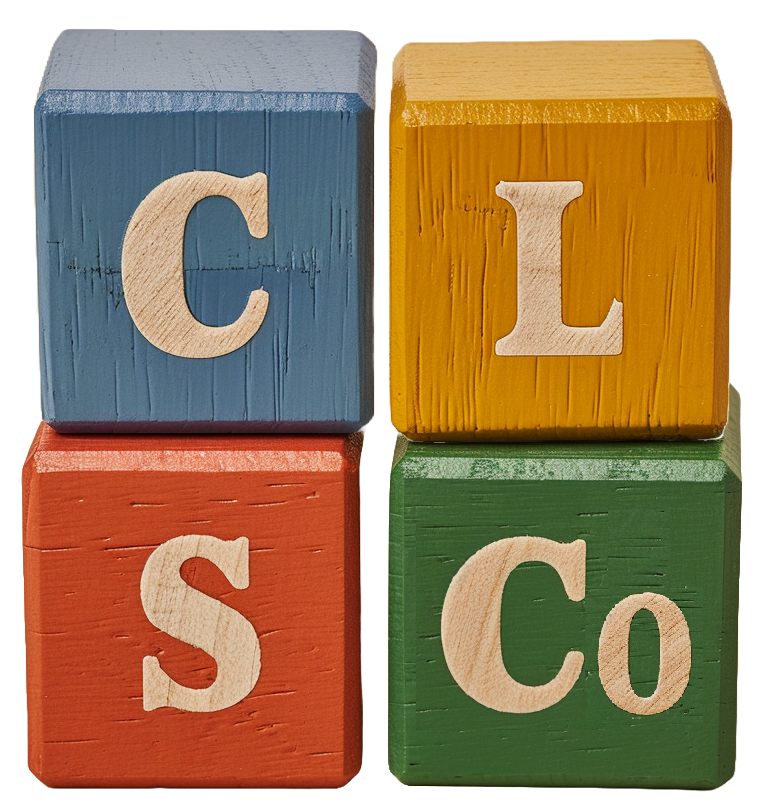WELCOME
Tell us about yourself
WELCOME BACK
YOU
CHALLENGERS
YOU
FILTER BY LANGUAGE
English
Espanol
中文
日本語
Italiano
HELP
THE AIM OF BACKGAMMON
In backgammon, the aim is to move all of your pieces first to your home board (the bottom right segment of the board on your screen) and then to bear all of your pieces off before the opponent does the same. Below different game rules are broken down by section for your reference.
1. ROLLING DICE
To roll your dice, simply click on your dice, displayed on the left side at the top. If it is your turn, your dice will display a clickable icon to tell you that they can be rolled. On the opponent’s turn, your dice will be slightly greyed out. When the dice are rolled, they will display their result and your remaining moves will be displayed in bold numbers above them. When a move is taken, its corresponding number will be greyed out.
2. MOVING PIECES
To move your pieces please hover over the top-most piece on one of your points. By holding the left mouse button down, the piece will become draggable. You can move the piece a number of points corresponding to one of your dice rolls, or in some cases (see section 3) both of them at the same time. Release the mouse button while the piece is on top of a valid point to move it there, and the piece will snap to the correct position on that point. Only the top-most piece on a point can be moved, but by moving one, you will open up the next top-most point to be moved also. You cannot move one of your pieces to a point occupied by more than one opponent piece, and moving a piece onto a point that contains only one opponent piece will take a blot (see section 5).
3. COMPOUND MOVES
In the case that you have two or more dice rolls remaining, you can often move a piece the combined number of those rolls in one go. This will consume those rolls. This is only possible if the piece could be leapfrogged one move at a time normally. For example if you have dice rolls of 5 and 6, it might be possible to move a piece by 11 points. However, if the point 5 and 6 points away is invalid, this will not work. Occasionally the system will prompt you to take the moves one at a time in the case that it cannot work out how your combination of moves is meant to be taken.
4. USE ALL OF YOUR ROLLS
Players must use all of their dice rolls if possible. This will sometimes result in players having to make sub-optimal moves. The only exception to this is if it is impossible to take all of your moves, in which case you can choose to end your turn early (see section 9). This cannot be enforced by the system (see section 13) and we have to rely on the honour system between players.
5. TAKING A BLOT
In backgammon, taking a blot refers to the process of ‘capturing’ an enemy piece. You can take a blot to slow the opponent down and to make it difficult for them to proceed. You can move one of your pieces onto a point that only contains one opponent piece in order to do this. The captured piece will move to the bar in the centre of the board and must be ‘rescued’ before that player can make any further progress. Taking blots is a fantastic way to slow an opponent down, but beware, they will have to move their pieces back into your home board to rescue them, so it may not always be the best course of action (see section 6).
6. RESCUING A PIECE
If one of your pieces is captured and put onto the bar, you will have to rescue this piece and get it back on the board before you can make any more progress in the game. To do this, roll the dice as normal and then move the piece from the bar to a point in the opponent’s home board (upper right on your screen). You can only move onto a point that is unoccupied or has only one opponent piece on it. It is possible that you will not be able to rescue a piece at all with your roll, in which case you will have to end your turn early (see section 9).
7. FORMING A WALL
As it is only possible to rescue a piece on the bar by moving it to a point that has one or no opponent pieces on it, it is possible to form a wall of your own pieces in your home board in order to block the other player from rescuing their pieces. For example, if every point in your home board has two of your pieces on it, it will be impossible for the other player to progress. This is the most common way of securing a Backgammon win condition (see section 10).
8. BEARING OFF
When a player gets all of their pieces into their home board it becomes possible to bear their pieces off. To bear a piece off, grab it and move it off the board to the top or the bottom this will make the piece move to either the upper left of the board along with a counter indicating how many pieces have been borne off so far. You can bear off a piece if you have a roll equal to or higher than its point number away from the end of the board. In some cases (such as a player taking a blot of one of your pieces) it will become impossible to bear off until all pieces are back in your home board.
9. ENDING YOUR TURN
In the case that you cannot use all of any of your dice rolls, it is possible to end your turn early by clicking the ‘End Turn’ button. The main cases where this will happen is when a piece cannot be rescued from the bar with your moves, or if there are no valid moves that can be taken with that roll. Clicking the button will create a popup in the middle of the screen to check that this is what you really want to do, along with the moves you have remaining.
10. THE END OF THE GAME
The game ends when one player has managed to bear off all of
their pieces. There are multiple win states:
Backgammon - This happens when one
player has managed to bear off all of their pieces while the
other player still has pieces in the opponent’s home board or
has pieces on the bar, and hasn’t managed to bear off any
pieces. This is worth 3 points in the official backgammon
rules.
Gammon - This happens when one player
has managed to bear off all of their pieces while the other
player still hasn’t managed to bear off a single piece.This is
worth 2 points in the official backgammon rules.
Win - This happens when one piece
bears off all of their pieces before the other player has. This
is the most common, as usually both players will manage to bear
something off before the end of the game. This is worth 1 point
in the official backgammon rules.
Once a game is finished, you can click the
‘End Game’ button that appears in the
centre of the screen to return to the player challenge screen.
11. CONCEDING
If you think a game is going badly, and you would like to concede gracefully, you can hover over the ‘MENU’ button and click on ‘CONCEDE’. This will create a popup in the middle of the screen to confirm if you would like to go ahead with this or not.
12. CHATTING
In Chatgammon, chatting to your opponent is highly encouraged. You can use the chat box to send a message by typing something into the input box and then pressing enter to send it. Feel free to discuss tactics, critique each other’s moves and chances, and even just use it for smack talk. We encourage players to be civil at all times and please do not type in anything too questionable to avoid offending other players. You can still chat once a game has been won or conceded, so some endgame analysis and congratulations/ ribbing is still possible until the ‘End Game’ button is clicked.
13. CHATGAMMON RULES
We have made a number of small rules decisions in the case of
chatgammon that might be different from what you expect. The
rules are as follows:
I. No roll to determine player colour
In normal backgammon, the player that will go first (red
colour) is determined by rolling one dice each and seeing which
player has the highest roll. In the case of Chatgammon, the
player who challenges the other is always red and always goes
first. This is to encourage players to challenge each other for
the advantage of going first.
II. Using all dice rolls is not automatically
enforced.
In normal backgammon, players must use all of their rolls
in the case that this is possible. In the case of Chatgammon,
this is still a rule, but it cannot be enforced by the system,
so we have to rely on the honour system. If a player makes a
mistake, use the chat to decide what to do, and in the case of
an irredeemable mistake it is encouraged that the offending
player should concede the game.
14. LINK TO FULL RULES
You can find the full rules to the game of backgammon at the following site: Backgammon Rules, all rules apply to this game apart from the rules specifically mentioned in section 13.

The Clever Little Software Company 2025
VERSION 0.3.3

